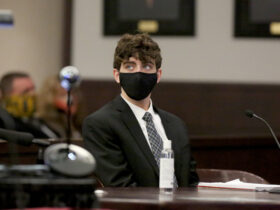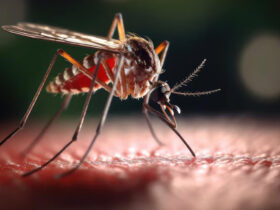Diving, an activity enjoyed by many for its exhilaration and the unique perspective it offers of the underwater world, also carries inherent risks, one of which is the face split diving accident. This type of injury, although rare, is a stark reminder of the importance of safety in aquatic activities. Understanding what a face split diving accident entails, its causes, consequences, and prevention methods, is crucial for both seasoned divers and novices.
Understanding Face Split Diving Accidents
The Nature of the Injury
A face split diving accident refers to a severe injury where a diver hits the water face-first with such force that it causes traumatic injury to the facial area. This kind of impact can result in fractures to the facial bones, severe lacerations, and in extreme cases, disfigurement. The velocity and angle of the diver’s entry into the water play critical roles in the severity of the injury.
The Mechanics Behind the Accident
When a diver jumps or dives from a significant height and fails to enter the water at the correct angle, the surface tension of the water acts like a solid barrier. The face, being the first point of contact, absorbs the brunt of this impact. The physics of the water’s resistance against the body, especially at high speeds or from great heights, is a fundamental factor in these accidents.
Causes and Contributing Factors
Lack of Experience or Training
Inexperienced divers are at a higher risk of facing such accidents. They might misjudge the height, the point of entry, or the body alignment needed when diving. Proper training and gradually increasing the height from which one dives can significantly reduce the risk.
Environmental Conditions
External factors such as poor lighting, unclear water, or underestimating the depth of water can contribute to face split diving accidents. Divers should always assess the environmental conditions before diving.
Risk-Taking and Peer Pressure
Sometimes, divers, especially younger ones, engage in risky behaviors or succumb to peer pressure. Attempting dangerous dives without proper skills or in unsafe conditions can lead to serious accidents.
Consequences of Face Split Diving Accidents
Immediate Physical Injuries
The immediate consequence of such an accident is the traumatic injury to the face. This can range from cuts and bruises to more severe injuries like broken bones or damage to the eyes, nose, or teeth. Immediate medical attention is vital to address these injuries.
Long-Term Physical and Psychological Effects
Survivors of severe face split diving accidents might face long-term physical challenges, including multiple surgeries or therapy for facial reconstruction. There is also a psychological impact, such as dealing with the trauma of the accident and potential changes in appearance.
The Burden on Health Services
Severe cases often require extensive and prolonged medical treatment, which can be a significant burden on healthcare services. These accidents not only impact the individuals involved but also the wider health system.
Prevention Strategies
Education and Training
The first line of defense against face split diving accidents is proper education and training. Divers should be taught the correct techniques and the importance of understanding their physical limits.
Awareness of Surroundings
Being aware of the diving environment is crucial. Divers should always check the depth of the water, be aware of any underwater hazards, and avoid diving in conditions that increase the risk of accidents.
Promoting a Culture of Safety
Creating an environment where safety is prioritized over impressing others can significantly reduce the incidence of such accidents. Peer groups and diving communities should encourage safe practices and discourage reckless behavior.
Recognizing High-Risk Diving Situations
Assessing Danger Before Diving
Not all diving situations carry the same level of risk. High cliffs, uncharted waters, or areas with rocky outcrops significantly increase the danger. Divers must learn to recognize these high-risk environments. Assessing factors such as water depth, surface conditions, and the presence of underwater hazards is crucial before deciding to dive. Divers should avoid locations that are unfamiliar or have not been deemed safe by local authorities or experienced professionals.
The Role of Lifeguards and Supervision
Ensuring Safety Through Vigilance
Lifeguards and supervisory personnel play a pivotal role in preventing face split diving accidents. Their training enables them to recognize risky behaviors or unsafe conditions, allowing them to intervene before an incident occurs. It’s essential for diving areas, especially public pools and beaches, to have qualified lifeguards on duty. Divers should also consider diving in pairs or groups, ensuring that someone is always watching and capable of providing immediate assistance or calling for help if needed.
Impact of Alcohol and Substances
The Dangers of Impaired Judgment
Consumption of alcohol or other substances can impair judgment, reaction time, and physical coordination, significantly increasing the risk of a face split diving accident. It’s imperative to avoid diving under the influence. Education campaigns highlighting the dangers of combining diving with alcohol or drugs can help reduce these incidents. Divers should be aware of their responsibility, not only to themselves but to others, by avoiding diving when their ability to assess and react to risks is compromised.
The Importance of Emergency Response
Handling Accidents Effectively
In the event of a face split diving accident, timely and effective emergency response is crucial. This includes immediate first aid to manage bleeding and potential shock, and quick transportation to a medical facility. Divers and those supervising diving activities should be trained in basic first aid and emergency response. Having a clear plan for emergencies, including knowledge of the nearest medical facilities and access to emergency contact numbers, can make a significant difference in the outcome.
Rehabilitation and Recovery
Overcoming the Aftermath
Recovery from a face split diving accident isn’t just physical; it often involves psychological rehabilitation as well. Victims may require counseling to overcome trauma and to cope with any changes in appearance or self-perception. Support groups and therapy can play an integral part in the recovery process. Rehabilitation might also include physical therapy to regain facial muscle function and cosmetic surgeries to address disfigurement.
Legal and Insurance Considerations
Navigating the Aftermath of an Accident
Face split diving accidents can have legal and insurance implications. Victims may face high medical bills, and if the accident occurred due to negligence (like improper maintenance of diving platforms or lack of warning signs), there might be grounds for legal action. Understanding insurance coverage and legal rights is important for anyone involved in such an accident. Divers should ensure they have appropriate insurance coverage, especially when diving in unfamiliar or potentially risky locations.
Conclusion
Face split diving accidents, while relatively rare, are a grim reminder of the dangers associated with aquatic sports and activities. Understanding the causes, consequences, and preventive measures of such incidents is vital for anyone engaging in diving activities. Education, awareness, and a commitment to safety can significantly reduce the risks and ensure that diving remains an enjoyable and safe experience for all. By respecting the water and acknowledging its power, divers can enjoy the beauty and thrill of diving without the shadow of such tragic accidents.

































